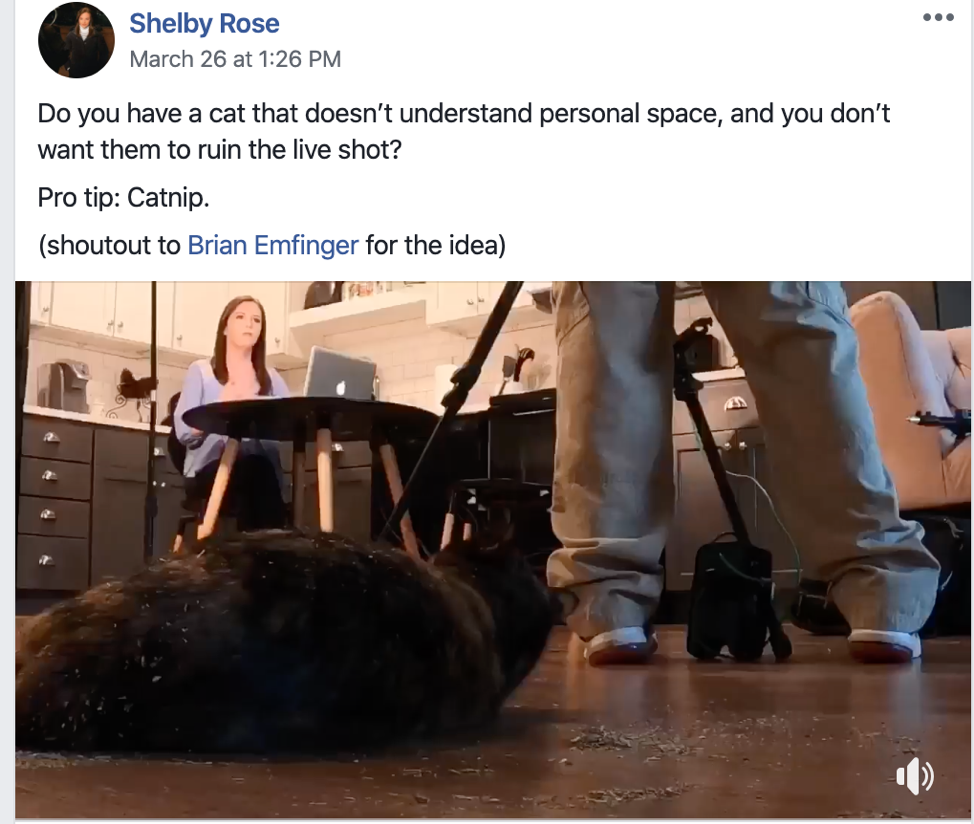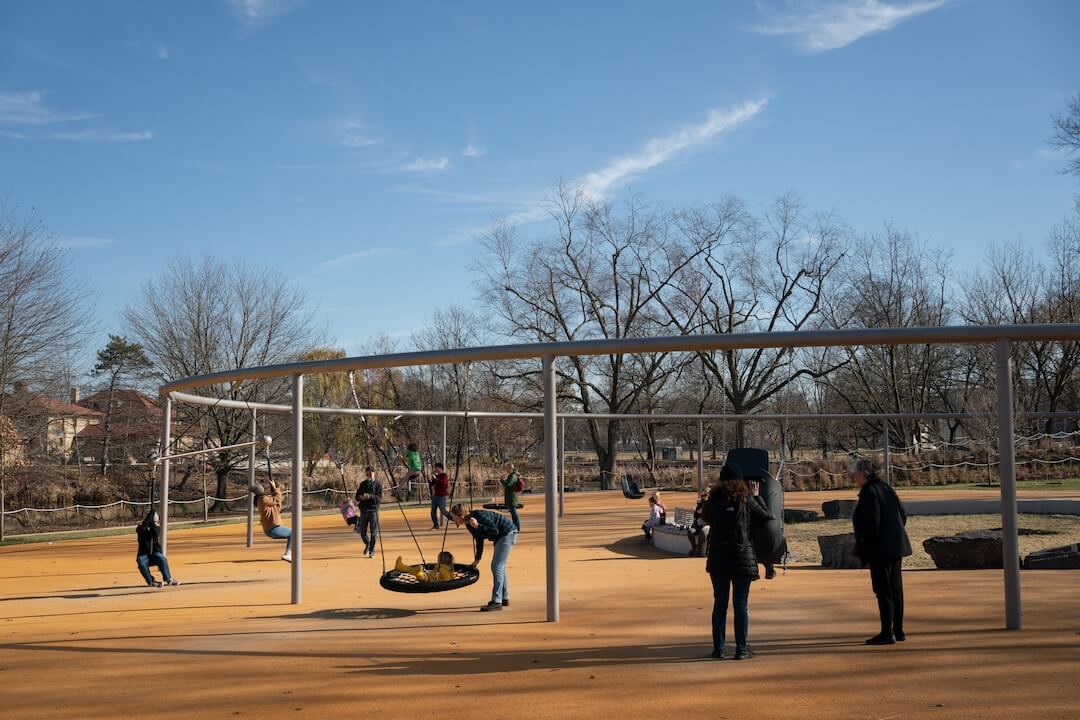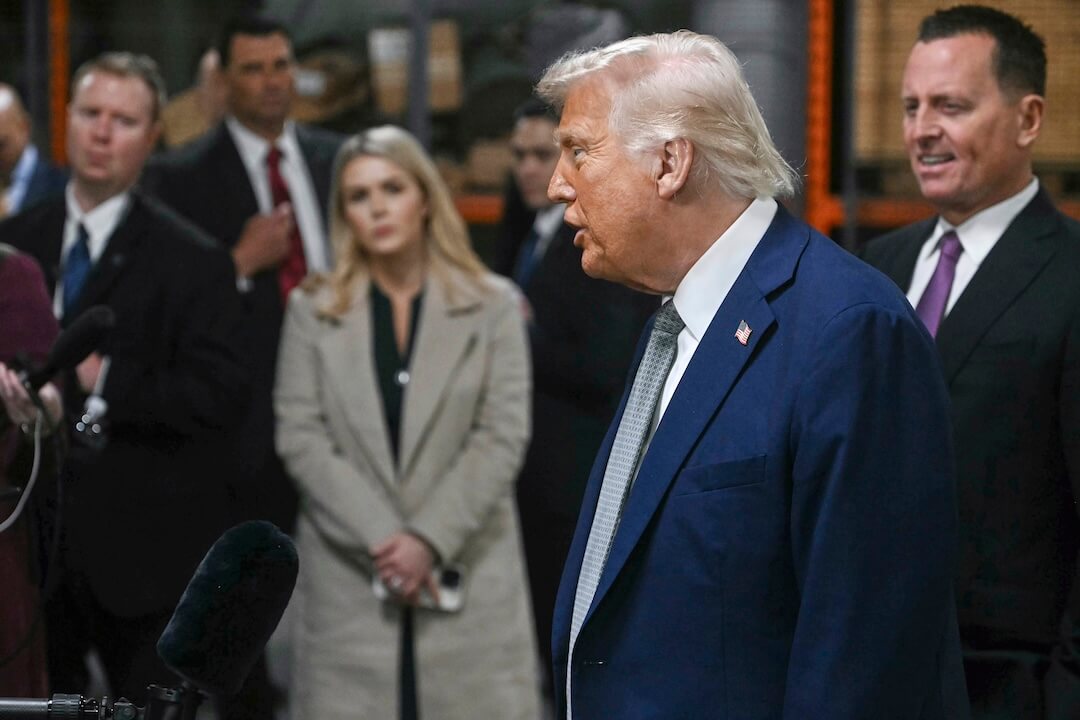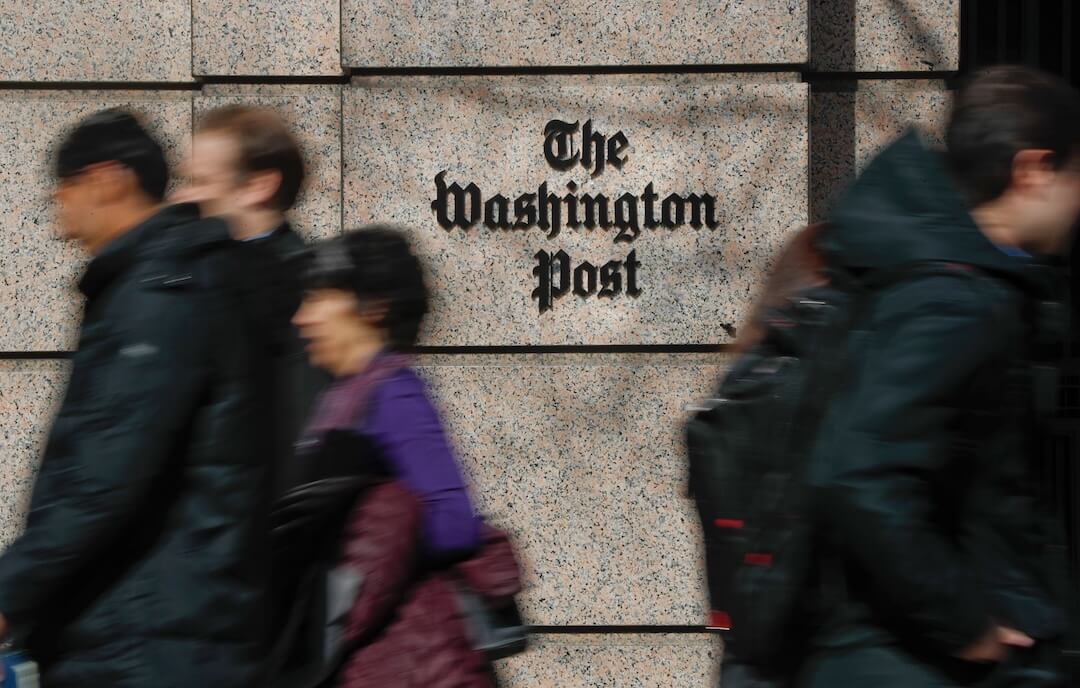 Covering COVID-19 is a daily Poynter briefing about journalism and coronavirus, written by senior faculty Al Tompkins. Sign up here to have it delivered to your inbox every weekday morning.
Covering COVID-19 is a daily Poynter briefing about journalism and coronavirus, written by senior faculty Al Tompkins. Sign up here to have it delivered to your inbox every weekday morning.
COVID-19 was detected in a Bronx Zoo tiger. What does it mean for pets and pet owners?
It is hard to know whether this is something that is going to spread enough to become concerning, but it is worth noting. The Bronx Zoo said a 4-year-old tiger named Nadia has tested positive for the COVID-19 virus.
The news raises new questions about species-to-species infections and prompted the government to tell dog and cat owners to keep animals separated from any people who have COVID-19 symptoms. But the World Organization for Animal Health said in January that “there is no evidence that dogs or cats are playing a role in the spread of this human disease.”
The U.S. Department of Agriculture announced Sunday that a zoo worker appears to have spread COVID-19 to the tiger.
The (USDA’s) National Veterinary Services Laboratories has confirmed SARS-CoV-2 (the virus that causes COVID-19 in humans) in one tiger at a zoo in New York. This is the first instance of a tiger being infected with COVID-19. Samples from this tiger were taken and tested after several lions and tigers at the zoo showed symptoms of respiratory illness.
Public health officials believe these large cats became sick after being exposed to a zoo employee who was actively shedding virus. The zoo has been closed to the public since mid-March, and the first tiger began showing signs of sickness on March 27. All of these large cats are expected to recover. There is no evidence that other animals in other areas of the zoo are showing symptoms.
The USDA says this is the only known case and no other zoos have reported illnesses.
The USDA did add an advisory for pet owners who test positive.
There is no evidence of this virus affecting animals at any other facilities in the United States. However, anyone sick with COVID-19 should restrict contact with animals, including pets, during their illness, just as they would with other people. Although there have not been reports of pets becoming sick with COVID-19 in the United States, it is still recommended that people sick with COVID-19 limit contact with animals until more information is known about the virus. If a sick person must care for a pet or be around animals, they should wash their hands before and after the interaction.
Health experts have known since January that COVID-19 might spread from humans to animals. The World Organization for Animal Health reported Jan. 4:
Now that COVID-19 virus infections are widely distributed in the human population there is a possibility for some animals to become infected through close contact with infected humans.
Several dogs and cats have tested positive to COVID-19 virus following close contact with infected humans.
On March 27, a housecat in Belgium tested positive for COVID-19 after the cat’s owner had recently traveled to Italy. Belgian authorities said based on current knowledge, the risk from humans transmitting the disease to animals is small. The risk of animals transmitting the disease to humans is “negligible compared to the risk to humans of contamination from human-to-human transmission.”
The USDA said there are no current plans to test animals that belong to people who test positive for COVID-19, but the advisory uses the phrase “at this time,” which leaves the option open if there is reason to believe the virus is moving between species.
How journalists are navigating HIPAA during COVID-19
Nothing would help us understand the gravity of the COVID-19 situation more than if we could see the effects unfolding in our hospitals. Hospitals are blocking journalists from documenting the shortages of ventilators and other supplies, so we rely on social media and interviews with doctors.
But seeing is believing, the old saying goes. It is true in war, it is true in disasters, and this is both a war and a disaster.
“There is unequivocal news value in bringing people imagery from inside hospitals, from the front lines of this virus,” NBC News president Noah Oppenheim told The Washington Post. He added, “It’s critical that we get as many of those pictures out in the world as possible.”
Let’s tap the brakes long enough to say that no reasonable person would suggest that journalists should sneak into hospitals to grab photos. And no reasonable person would suggest journalists work around affected patients without maximum precautions and protection. We have already lost colleagues to this illness and others have already been sickened.
HIPAA’s intent and misuse
Since the Health Insurance Portability and Accountability Act of 1996 and the Privacy Rule that goes with it passed in 2003, it has become a foil to journalists seeking even basic information from hospitals, nursing homes, health departments, medical examiners and police.
Now, at a moment when the public demands reliable data about the spread and effects of COVID-19, journalists cannot get the data and images that would help the public understand the urgency of this pandemic. There would be no denying shortages of protective gear if we could see it.
In Florida, Gov. Ron DeSantis refused to name nursing homes where patients tested positive. The (Poynter-owned) Tampa Bay Times reported:
The DeSantis administration has based its refusal, so far, to name homes with positive results on its desire to protect the confidentiality of residents. While he has not named the law, DeSantis appears to be invoking the federal Health Insurance Portability and Accountability Act, or HIPAA, which protects patient medical records and privacy.
Pamela Marsh, a former top federal prosecutor who now heads the Tallahassee-based First Amendment Foundation, suggested that the HIPAA law is a fig leaf being used to hide vital information.
“That information should be made available,” Marsh, the former United States attorney for Northern Florida, told the (Miami) Herald. “It can’t be business as usual for the families of loved ones in care.”
When the state government would not name the nursing homes, the businesses themselves told the public that some of their residents had tested positive for the virus.
The nonprofit group Families for Better Care launched a social media campaign attacking the governor for not reporting what even the nursing homes themselves have released.
[the_ad id=”667872″]
HIPAA does not prevent health providers from responding to journalists
Even while some nursing homes and hospitals hold up HIPAA as a reason not to release general information about the patients they have treated, there are many examples of when they routinely report such things. Brian Lee, the executive director of Families for Better Care, told WJXT-TV (Jacksonville):
“Look, they publish information about facilities all over their website. They have inspection results whenever there are scabies outbreaks, there are norovirus outbreaks, information is released. They can’t use that excuse any longer. It’s laughable. They are not releasing anyone’s individual health care information. That’s what HIPAA is all about — individual health information.”
In Iowa, health officials in several counties would not release how many people had taken COVID-19 tests and cited HIPAA as one reason they would not release the information. Iowa Freedom of Information Council executive director Randy Evans pointed out the same hospitals have no problem reporting how many babies are born at their facilities each year.
The first thing to understand is that HIPAA pertains ONLY to “covered entities,” which include health care providers (such as EMTs, doctors, nurses and social workers) and insurance companies. HIPAA does not cover journalists, police and fire departments (except EMTs.) HIPAA does not cover religious organizations that are not health care providers.
The U.S. Department of Health and Human Services issued a specific briefing page for how HIPAA relates to the COVID-19 outbreak. The advisory reminds health care providers, including doctors, that they cannot release specific information about a patient — such a person’s name who tested positive (or negative) for COVID-19 — without written authorization from the patient.
But let’s be clear: HIPAA was intended to protect individual medical and health information. Those individual protections still apply even in a pandemic. HIPAA does not allow a care provider to release individual demographic information, but the key word there is “individual.” That is why hospitals can, for example in the case of a mass shooting, say how many people were admitted, went to surgery and were treated and released.
HIPAA covers “Protected Health Information,” which is information that would make a person identifiable. So while it would not be a HIPAA violation for a health care provider to say 70% of its ICU beds are full or that it has tested 300 people or that all of the people in the ICU are over age 65, it would be a violation to say “Al Tompkins is in the ICU.” Again, that is only for a “covered entity.” It is not a HIPAA violation for a journalist to report a name, it is only a problem for the health care provider.
And HIPAA DOES allow a health care provider to release even personally identifiable information to a public health authority — for example, the Centers for Disease Control and Prevention — for the purpose of controlling a disease, like COVID-19. (See 45 CFR § 164.501 and 164.512(b)(1)(i).)
My friend, National Press Photographers Association legal counsel Mickey Osterreicher, offered some advice for journalists if cops or hospitals try to stop your COVID-19 reporting. He said he is hearing from some photojournalists that hospitals have tried to use HIPAA as a reason to forbid photographers from photographing hospital buildings or workers.
ProPublica also published help for journalists trying to navigate HIPAA rules:
Even with HIPAA, you can still get ‘de-identified’ data
If a data set has been “de-identified,” HIPAA’s privacy rules do not apply. There are two methods for de-identification: “safe harbor,” which suppresses fields that reveal personally identifiable information, and “expert determination,” which relies on experts to verify that there is a limited risk of identifying patients.
- Check if de-identified data is available for download online. Local and state health agencies sometimes put de-identified data sets online. These data sets have minimal, if any, restrictions on their use.
- Ask a records officer to remove personally identifiable fields. If the health data you want includes any personal identifiers, consider requesting the data with these variables removed or redacted. If there are account or Social Security numbers to identify each patient, ask for dummy IDs (but make sure to find out which variables have been replaced by dummy numbers).
- Request aggregate data. Some records officers may deny your request on the grounds that aggregating data is the same as “creating” data, which they may not be legally obligated to do. So ask nicely, and negotiate! If you are able to get aggregated data (or data you can only publish in an aggregate form), you may be prohibited from publishing data on small groups of people in order to protect the privacy of patients.
Pink eye may be a new symptom of COVID-19 infections
The evidence so far is limited, but Chinese researchers said COVID-19 may be spread by tears and has been found to be associated with the symptoms of pink eye (conjunctivitis).
The American Academy of Ophthalmology sent an alert to members saying in addition to breathing in the virus, patients might have been infected through the eyes.
Maybe we are not hoarding toilet paper after all
Over the last few weeks we have collectively sneered and scolded each other over what seemed to be an overreaction to a shortage of toilet paper. The first instinct was to suspect people (not you, of course) were hoarding, maybe out of fear, maybe as some psychological need to take control of something. But here is a different, more logical view.
Maybe it is that most of us do not usually use home bathrooms all the time. And when we are not using bathrooms at work, at airports and universities, maybe we really do need more toilet paper at home.
Will Oremus, a senior writer for OneZero on Medium, wrote:
Georgia-Pacific, a leading toilet paper manufacturer based in Atlanta, estimates that the average household will use 40% more toilet paper than usual if all of its members are staying home around the clock. That’s a huge leap in demand for a product whose supply chain is predicated on the assumption that demand is essentially constant. It’s one that won’t fully subside even when people stop hoarding or panic-buying.
Oremus explained that the two different markets, the home market and the commercial market, use different kinds of toilet paper, so it is not as simple as just diverting shipments that might have gone to one to go to the other market.
The story quotes Jim Luke, a professor of economics at Lansing Community College, who once worked as head of planning for a wholesale paper distributor as saying, “I’m absolutely convinced that very little was triggered by hoarding.”
The toilet paper supply chain is similar to the precision and complexity of other things we take for granted. NPR interviewed Mark Levin, CEO of a fruit and vegetable wholesaler, who explained that his company supplies bananas to schools and restaurants. But when those customers don’t need the fruit, he can’t just ship it to grocery stores who need more. Why? Because schools and restaurants want smaller bananas that are already cut apart while groceries want bigger fruit still in bunches.
[the_ad id=”667878″]
Should I microwave my mail?
The Canadian Broadcasting Corporation answered some interesting questions from the public, including this one. The answer is no, don’t microwave your mail, because it might catch fire. Even though, “According to a recent study, the virus persists on some surfaces, including paper products such as cardboard for up to 24 hours,” the CBC said the chances of you touching a surviving virus then putting it into your body are pretty slim.
Should I put my mail in the freezer?
The CBC found this question to be more interesting because as you probably know, freezers can preserve viruses. So if you have a virus on a package that you put in the freezer and then bring it out and thaw it, the virus could still be there. But it is all a pretty remote threat, more theoretical than real.
Canadian health authorities said the same thing the CDC and World Health Organization say about food safety: “Wash your hands.” And you are probably in greater danger from the calories in those Twinkies than any germs on their wrapper. OK, I said that last part, not the CDC.
How to clean your phone
Everybody is telling you to wash your hands, but there is one other thing you probably have near your face a lot: your phone. So clean it.
Health researchers have done some limited studies on how gross our cellphones are. One study showed that touch screen phones were particularly germy. We don’t clean them much partly because we don’t want to get anything wet near the electronics.
Apple said disinfecting wipes are fine for cleaning phones. After you clean your phone, wash your hands.
If you have the money, you can go higher-tech and use ultraviolet light to sanitize your electronics. You know, for $200, this seems like something that every newsroom might consider. Each sanitizing session takes 10 minutes.
How we work right now
For some TV journalists who are going live from living rooms or basements or kitchens (as I am), pets have made on-screen appearances. Some of you have found ways to tame the lions.
We’ll be back tomorrow with a new edition of Covering COVID-19. Sign up here to get it delivered right to your inbox.
Al Tompkins is senior faculty at Poynter. He can be reached at atompkins@poynter.org or on Twitter, @atompkins.









